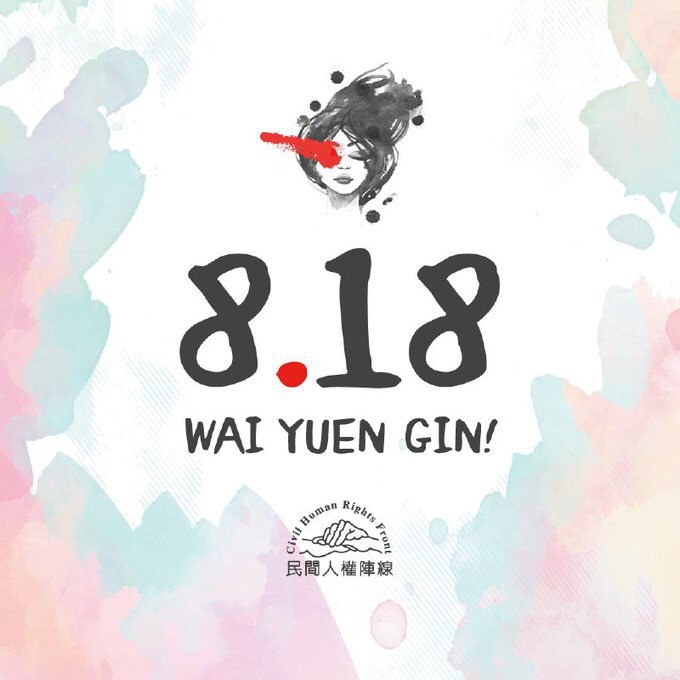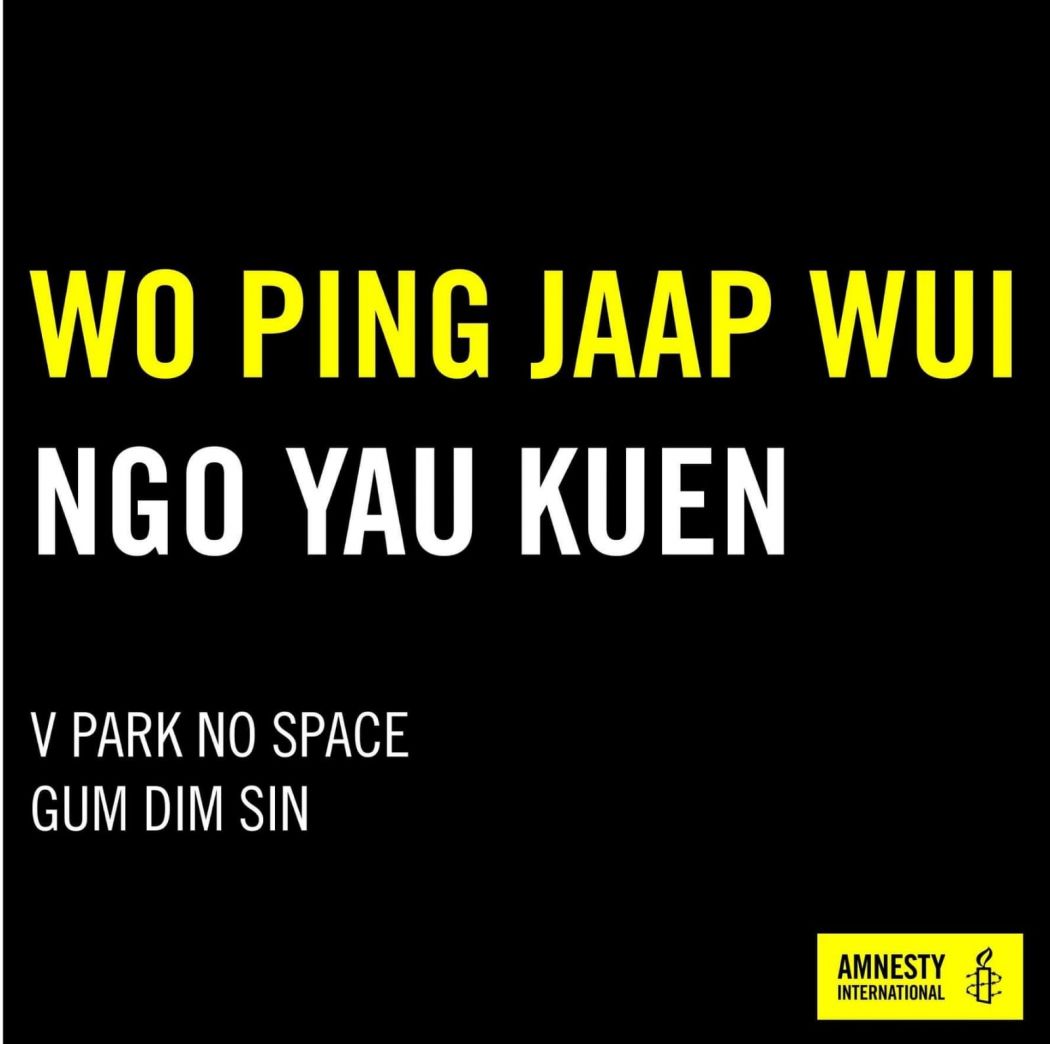By Rachel Leung Ka-yin
“Gwong Fuk Heung Gong! Si Doi Gark Ming!”
If you understand the above slogan, chances are you’re probably a Hong Konger born in the post-80s or 90s. If that did not make any sense to you, the “language” in use is a form of loose Cantonese romanisation, which recently saw a surge from the niche to widespread use in political activism via the online platform LIHKG.

Loose Cantonese romanisation differs from the standard forms of Cantonese romanisation such as Jyutping and Yale romanisation, and is believed to have come into existence in the late 2000s. It arose organically as a result of the increased use of instant messaging applications among youngsters who were unfamiliar with the Chinese input systems of Cangjie or Zhuyin.
As the use of personal mobile phones and texting became widespread in the early 2010s, texters did not always change to the available Chinese input methods from the default English keyboard when expressing Cantonese messages, rather choosing to resort to romanisation of Cantonese words via the English alphabet.
Why did loose Cantonese romanization arise?
Romanising Cantonese according to the rules of English phonics requires the romaniser to be familiar with both the phonics of written English and the phonology of spoken Cantonese.
The Hong Kong Education Bureau’s “Trilingual and Biliterate” language education policy since the 1997 handover greatly increased English language standards among students. Thus the average post-90 would be likely to be much more familiar with English phonics, rather than Jyutping or Yale.
This laid the necessary linguistic foundations for a new form of Cantonese romanisation to arise organically amongst the post-90s generation.

Was loose Cantonese romanisation always so prevalent?
Loose Cantonese romanisation did not formerly enjoy the popularity it does today, and in the late 2000s and early 2010s was largely confined to the niches of intra-group communication between young post-90s Hong Kongers with high bilingual literacy.
However the Umbrella Revolution in 2014 would see various news outlets, such as localist magazine “100 Most”, demonstrate the increased use of the wider linguistic phenomenon Chinglish/Kongish. A distinct sociolinguistic identity among Hong Kongers (the “Cantonese Is My Mother Tongue” movement) to counter the corrosion of Cantonese by Mandarin was also salient.
These linguistic conditions set the stage for the creation of bite-size news page Kongish Daily (more than 48,000 likes to date), which uses loose Cantonese romanisation in conjunction with code-mixing and Hong Kong English to caption and share news updates in line with an understated localist agenda.
How did loose Cantonese romanisation become prevalent in political activism?
One post on LIHKG was all it took for loose Cantonese romanisation to shoot to the front lines of the anti-ELAB protest and resistance movement. The initial thread read:
“LEI YUT GOR HAI 8.18 DA GA KAU TONG GE FONG SIK
IF U WAI YI YAU GHOST, WRITE ON A PIECE OF PAPER
“NEI GI NG GI NGO UP MUD 7 AH?”
YU GWOR KUI TAI NG MING
JAU GI KUI HAI YUN DING HAI GWAI LA
TONG NGO TUI BAO KUI AH DIU!!!!!!!”
Approximate translation with glosses:
This is how we communicate on 8.18 (day of scheduled peaceful protest), if you suspect there might be a ghost (a troll/ spy), write on a piece of paper: ‘Do you know what the **** I’m saying?’ (in loose romanised Cantonese). If they are unable to understand, you will then know if they are human (a true protester) or ghost (a troll/ spy). Bump this so it becomes ****ing viral!!!!!!
Posted by Stand News 立場新聞 on Saturday, 17 August 2019
Protesters were wary of online trolls and spies planted by the Chinese government in their midst, and a LIHKG user suggested the use of loose Cantonese romanisation, understood only by Cantonese speakers, to weed out Mandarin speakers from the mainland, who may be able to sound the slogan but would be unable to comprehend its meaning.
Following this post, a barrage of political slogans and posters appeared online overnight, from the unofficial slogan of the anti-ELAB protests “Gwong fuk heung gong, si doi gark ming” (Liberate Hong Kong, the revolution of our times); to the call to protest “Wai yuen gin” (See you at Victoria Park) calling on citizens to join the peaceful protest in Victoria Park on the following day; and the informational “Wo ping jaap wui ngo yau kuen, V park no space gum dim sin” (I have the right to peaceful protest, but there is no space in Victoria Park, what should we do?).

What does the use of loose Cantonese romanisation imply for the social and linguistic identity of Hong Kongers?
Social identity is intrinsically linked to the linguistic identity of a people. As the linguistic identity of the Hong Kong Chinese becomes more developed and complex, their social identity also undergoes changes in aspects of culture and politics.
The use of loose Cantonese romanisation by Hong Kongers in political activism is used to signal a salient group distinctiveness, an expression of a group membership and social identity. It differs from instances of romanisation in other contexts — such as, rather ironically, the non-standard form of romanisation adopted by the Hong Kong Government for the names of roads and places — in that it serves the purpose of contending with the infiltration of Cantonese by Mandarin.
The use of loose Cantonese romanisation in these highly publicised contexts (slogans, activism materials, public online forums) as compared with its previous confinement to niche and rather private communication (instant messaging) also demonstrates that Hong Kongers have increasingly adopted this form of communication as part of their social and linguistic identity, to validate their status as Hong Kongers.
In hindsight, the spread of loose Cantonese romanisation developed organically, and slowly but surely from the niche to the masses until one post on LIHKG shot it to stardom.
Hence, looking forward, the further development of loose Cantonese romanisation will probably be entwined with the political fate of Hong Kong and the language education policies of government.
The productivity of loose Cantonese romanisation will continue to produce linguistic innovations that will redefine the lexicon as we know it. Until then, our generation will be known as the vanguard of the trilingual and triliterate.
Rachel Leung Ka-Yin is a student of Psychology at the University of Oxford. Her poems have won awards in the Proverse Poetry Prize, and the Oxford Brookes International Poetry Competition. Her debut pamphlet is forthcoming with the Hedgehog Poetry Press in March 2020. She has been featured in the Cha Reading Series.
